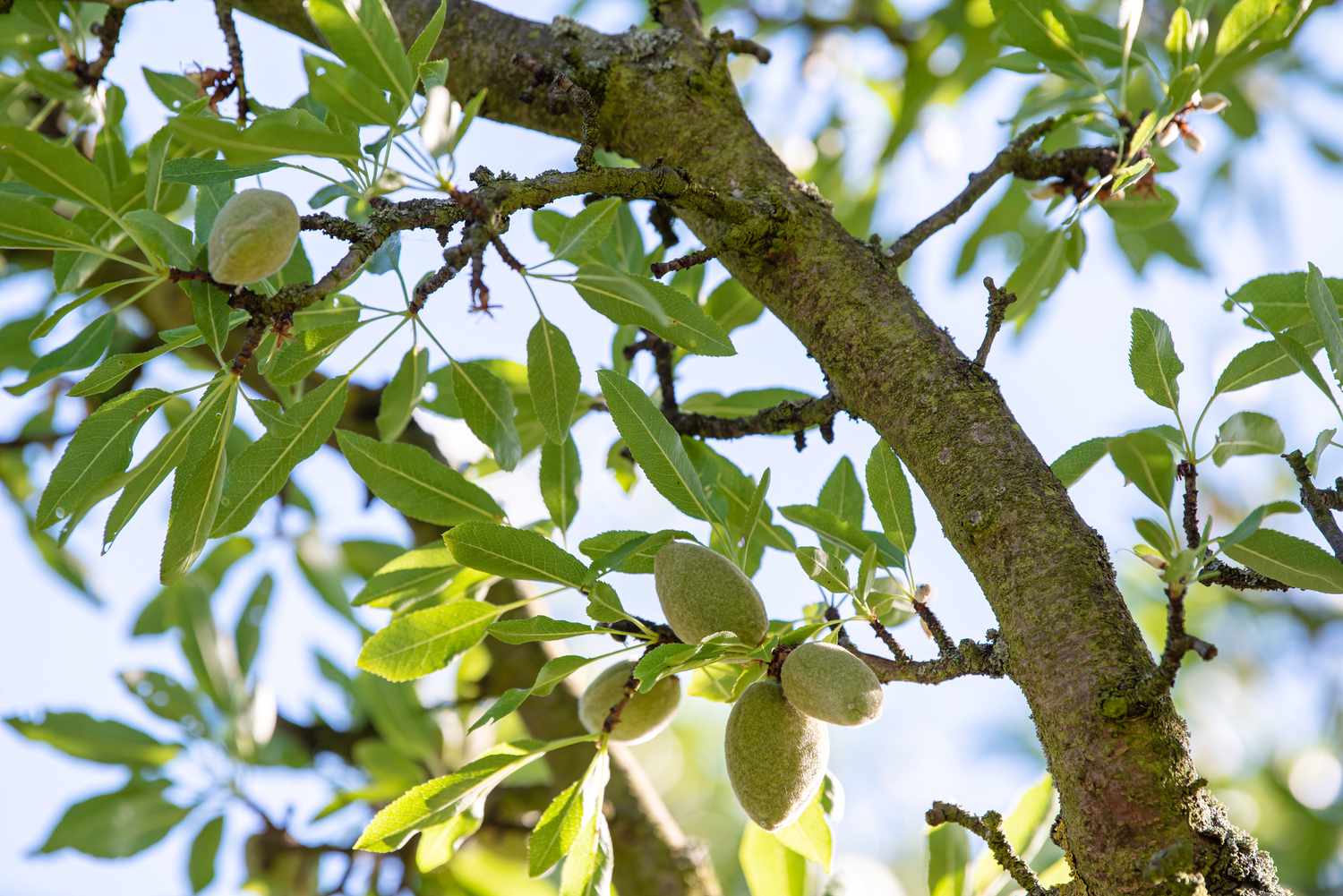How to Plant and Grow Prayer Plant: Expert Tips for Success

Plant a prayer plant in well-draining soil and place it in indirect sunlight. Water regularly to keep the soil moist.
The prayer plant, known for its striking foliage, is a popular houseplant. Its leaves fold up at night, resembling praying hands. This plant thrives in indirect light and high humidity. Regular watering and well-draining soil are crucial for its growth.
Prayer plants can enhance indoor spaces with their vibrant patterns and colors. They are also relatively easy to care for with the right conditions. For optimal growth, maintain a consistent watering schedule and ensure the plant receives adequate humidity. This makes the prayer plant an excellent choice for both novice and experienced gardeners.

Introduction To Prayer Plant
Prayer plants are known for their beautiful, vibrant leaves. These plants are also famous for their unique movement. In the evening, the leaves fold up like praying hands. This movement gives the plant its name. Learn more about this fascinating plant below.
What Is A Prayer Plant?
The prayer plant, scientifically called Maranta leuconeura, is a popular houseplant. It is loved for its attractive foliage. The leaves often have striking patterns and colors. They can be green, red, or even purple. The plant is relatively easy to care for, making it great for beginners.
Origin And History
The prayer plant originates from the tropical forests of South America. It is especially common in Brazil. The plant thrives in warm, humid environments.
| Feature | Details |
|---|---|
| Scientific Name | Maranta leuconeura |
| Native Region | South America |
| Preferred Climate | Warm and humid |
Prayer plants were named by Bartolomeo Maranta, an Italian botanist. They have been popular houseplants for centuries. People appreciate their beauty and unique leaf movements.
Choosing The Right Prayer Plant
Prayer plants are popular for their beautiful foliage and easy care. Selecting the right one is essential for a thriving plant. This guide will help you choose the perfect prayer plant for your home.
Varieties Of Prayer Plant
Prayer plants come in several varieties. Each has its unique beauty. Here are some popular types:
- Maranta leuconeura – Known for its green leaves with red veins.
- Calathea orbifolia – Features large, round leaves with silver stripes.
- Calathea lancifolia – Also called Rattlesnake plant, it has wavy leaves with dark spots.
- Calathea makoyana – Peacock plant, with its intricate leaf patterns.
How To Select A Healthy Plant
Choosing a healthy prayer plant is crucial. Follow these tips:
- Check the leaves for any signs of damage or discoloration.
- Ensure the plant has no pests like spider mites or aphids.
- Look for a plant with vibrant colors and firm leaves.
- Avoid plants with yellowing or wilting leaves.
- Check the soil to ensure it is not too dry or too wet.
A healthy prayer plant will have strong stems and rich, green leaves.
Ideal Growing Conditions
Growing a Prayer Plant, also known as Maranta leuconeura, requires specific conditions. This guide will help you create the perfect environment for your plant to thrive.
Light Requirements
Prayer Plants prefer bright, indirect light. Direct sunlight can scorch their leaves. A north or east-facing window is ideal. If natural light is limited, use fluorescent lights.
Temperature And Humidity
Prayer Plants thrive in warm temperatures. Keep them between 65-75°F (18-24°C). Avoid sudden temperature changes. Drafts from windows or doors can harm them.
High humidity is crucial for Prayer Plants. Aim for 60-70% humidity. Use a humidifier or place a tray of water near the plant. Grouping plants can also increase humidity.
Soil And Potting
Understanding the right soil and potting techniques is crucial for growing a healthy Prayer Plant. These elements provide the foundation for the plant’s growth. Let’s delve into the best soil mix and how to choose the right pot.
Best Soil Mix
The Prayer Plant thrives in well-draining soil. A mix of peat moss, perlite, and potting soil works best. This blend ensures proper drainage and retains moisture.
Here’s a simple recipe for creating the perfect soil mix:
- 1 part peat moss
- 1 part perlite
- 1 part potting soil
Peat moss helps retain moisture. Perlite ensures good drainage. Potting soil provides nutrients. Combine these in equal parts for the best results.
Choosing The Right Pot
Choosing the right pot is vital for your Prayer Plant. The pot should have drainage holes to prevent waterlogging.
Consider the following points when selecting a pot:
| Feature | Importance |
|---|---|
| Drainage Holes | Prevents root rot |
| Size | Should accommodate growth |
| Material | Terracotta or plastic works well |
Drainage holes are crucial. They prevent the roots from sitting in water. Size matters too. A pot that’s too small stunts growth. A pot that’s too large can lead to overwatering.
Terracotta pots are breathable. They allow moisture to evaporate. Plastic pots retain moisture longer. Choose based on your watering habits.
Watering And Feeding
Proper watering and feeding are crucial for the health of your prayer plant. These practices ensure vibrant leaves and healthy growth. Follow these guidelines to keep your plant thriving.
How Often To Water
Water your prayer plant when the top inch of soil feels dry. This usually means watering once a week. But it can vary based on your home’s humidity and temperature.
Use room-temperature water. Cold water can shock the roots. Make sure the pot has drainage holes. This prevents water from sitting at the bottom, which can cause root rot.
Here’s a simple watering schedule:
| Season | Frequency |
|---|---|
| Spring | Once a week |
| Summer | Twice a week |
| Fall | Once a week |
| Winter | Every 10 days |
Fertilizing Tips
Feed your prayer plant every two weeks during the growing season. Use a balanced, water-soluble fertilizer. Dilute it to half the recommended strength to avoid over-fertilizing.
During fall and winter, reduce feeding to once a month. This helps the plant rest and prepare for the next growing season.
Here are some quick fertilizing tips:
- Always water before fertilizing to avoid root burn.
- Use organic fertilizers for a natural boost.
- Check for yellow leaves, which can signal over-fertilizing.
By following these watering and feeding tips, your prayer plant will flourish beautifully.

Pruning And Maintenance
Pruning and maintaining your Prayer Plant ensures it stays healthy and vibrant. Proper care helps the plant grow lush and prevents issues. Regular maintenance is crucial for the longevity of your plant.
When To Prune
Prune your Prayer Plant during the growing season. This is typically in spring and summer. Use sharp, clean scissors or pruning shears. Cut just above a leaf node to encourage new growth. Remove dead or yellowing leaves promptly. This helps the plant conserve energy for healthy leaves.
Dealing With Pests And Diseases
Prayer Plants can suffer from pests like spider mites and aphids. Inspect your plant regularly for any signs of infestation. Use a mixture of water and mild soap to clean the leaves. Neem oil is another effective solution for pests.
Diseases like root rot can occur if the soil is too wet. Ensure proper drainage to prevent this. Avoid overwatering your plant. Remove any infected parts immediately to stop the spread. Keep the environment humid but not overly wet.
| Issue | Solution |
|---|---|
| Spider Mites | Clean leaves with soapy water or use neem oil |
| Aphids | Spray with insecticidal soap |
| Root Rot | Ensure proper drainage and avoid overwatering |
Propagation Techniques
Prayer plants are beautiful and easy to grow. Learning propagation techniques helps you grow more plants. There are two main methods for propagating prayer plants. These are division and stem cuttings. Both techniques are simple and effective.
Propagation By Division
Propagation by division involves separating the plant into smaller parts. This method is best during repotting time. Follow these steps:
- Remove the plant from its pot.
- Gently shake off excess soil.
- Locate the natural divisions in the roots.
- Carefully separate the roots with your hands.
- Plant each section in its own pot with fresh soil.
Water the new plants well. Place them in a warm, indirect light spot. They will grow into healthy new prayer plants.
Propagation By Stem Cuttings
Propagation by stem cuttings is another great way to grow prayer plants. Follow these steps:
- Choose a healthy stem with at least two leaves.
- Cut the stem just below a leaf node.
- Remove the lower leaves from the cutting.
- Place the cutting in water or moist soil.
If using water, change it every few days. Roots will appear in a few weeks. Once roots are 1-2 inches long, plant the cutting in soil. Keep the soil moist and provide indirect light. Soon, you will have a new prayer plant.
Common Problems And Solutions
Growing a prayer plant can sometimes come with challenges. Common problems include yellowing leaves and curling leaves. Addressing these issues promptly ensures your plant thrives. Let’s dive into these problems and their solutions.
Yellowing Leaves
Yellowing leaves are a common issue with prayer plants. This problem often indicates overwatering or poor drainage. Make sure the pot has drainage holes. Water the plant only when the top inch of soil is dry.
Yellowing leaves can also be caused by insufficient light. Place your plant in bright, indirect light. Avoid direct sunlight as it can scorch the leaves.
Lastly, yellowing could be a sign of nutrient deficiency. Use a balanced, water-soluble fertilizer every month during the growing season.
Curling Leaves
Curling leaves usually indicate low humidity or underwatering. Prayer plants thrive in high humidity. Use a humidifier or place a tray of water near the plant. Mist the leaves regularly.
Underwatering can also cause leaf curling. Check the soil moisture level and water when necessary. Ensure the soil stays moist but not waterlogged.
Temperature stress may also cause curling leaves. Keep your plant in a stable environment. Avoid placing it near drafts or heaters.
Seasonal Care Tips
Knowing how to care for your Prayer Plant during different seasons is crucial. This ensures your plant thrives all year round. Below are essential tips for winter and summer care.
Winter Care
During winter, Prayer Plants need special attention. They prefer temperatures between 60-75°F. Avoid placing them near drafts or heaters.
- Light: Prayer Plants need bright, indirect light. Too much light can scorch their leaves.
- Watering: Water less frequently in winter. Check the soil before watering. Ensure it is slightly dry.
- Humidity: Maintain humidity levels above 40%. Use a humidifier or a pebble tray.
- Fertilizing: Do not fertilize in winter. The plant’s growth slows down.
Summer Care
In summer, Prayer Plants grow actively. They need more water and higher humidity.
- Light: Place your plant in a spot with indirect sunlight. Direct sunlight can damage the leaves.
- Watering: Water your plant when the top inch of soil is dry. Keep the soil moist but not soggy.
- Humidity: Aim for humidity levels above 60%. Mist the leaves or use a humidifier.
- Fertilizing: Feed your plant every two weeks. Use a balanced, water-soluble fertilizer.
| Season | Light | Watering | Humidity | Fertilizing |
|---|---|---|---|---|
| Winter | Bright, indirect light | Water less frequently | Maintain above 40% | Do not fertilize |
| Summer | Indirect sunlight | Water when top inch is dry | Maintain above 60% | Feed every two weeks |
Conclusion And Final Tips
Growing a prayer plant is rewarding. This guide provides all you need. Remember these final tips for success.
Summary Of Key Points
- Lighting: Place the plant in bright, indirect light.
- Watering: Keep the soil moist but not soggy.
- Humidity: Ensure high humidity for healthy growth.
- Temperature: Maintain temperatures between 65°F to 75°F.
- Fertilizing: Feed the plant monthly during the growing season.
- Repotting: Repot every two years to refresh the soil.
Additional Resources
For more detailed information, check out these resources:
| Resource | Description |
|---|---|
| Houseplant 411 | Comprehensive guide on houseplants. |
| Gardeners.com | Tips and products for gardening. |
| Our House Plants | Detailed care guides for various houseplants. |
Happy planting! Enjoy your beautiful prayer plant.
Frequently Asked Questions
How Much Light Does A Prayer Plant Need?
Prayer Plants thrive in bright, indirect light. Direct sunlight can scorch their leaves. A north-facing window is ideal.
How Often Should I Water A Prayer Plant?
Water your Prayer Plant when the top inch of soil is dry. Avoid letting the soil dry out completely.
What Soil Is Best For Prayer Plants?
Use well-draining, peat-based potting soil for Prayer Plants. A mix of potting soil and perlite works well.
How Do I Propagate A Prayer Plant?
Propagate by stem cuttings in water or soil. Ensure the cuttings have at least one node.
Conclusion
Cultivating a prayer plant is simple and rewarding. Follow the steps outlined for optimal growth. Ensure proper lighting, watering, and soil conditions. Your efforts will result in a lush, vibrant plant. Enjoy the beauty and tranquility it brings to your home.
Happy gardening and may your prayer plant thrive!







3 thoughts on “How to Plant and Grow Prayer Plant: Expert Tips for Success”